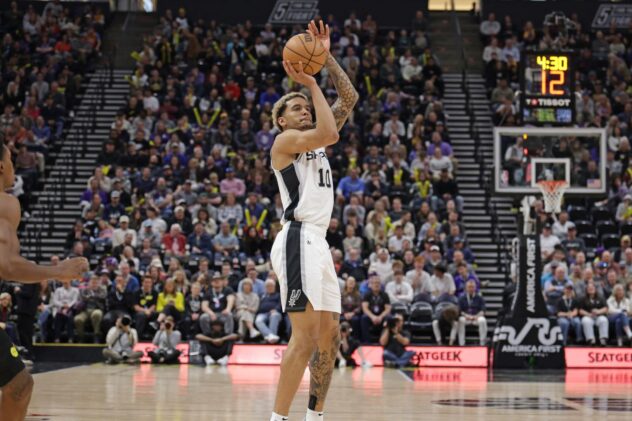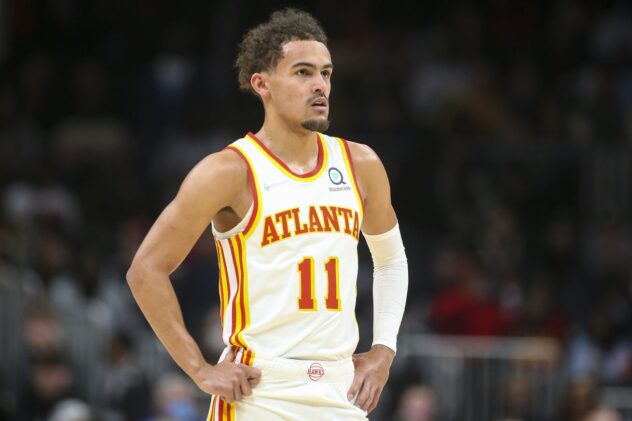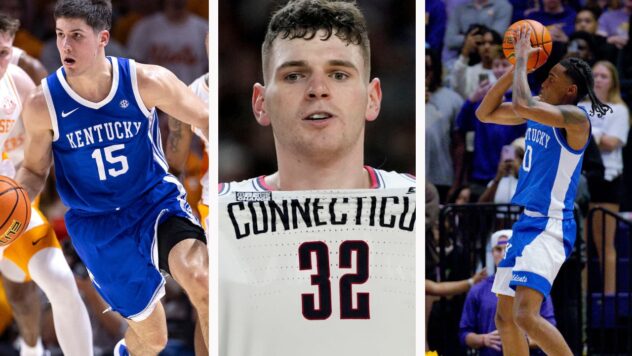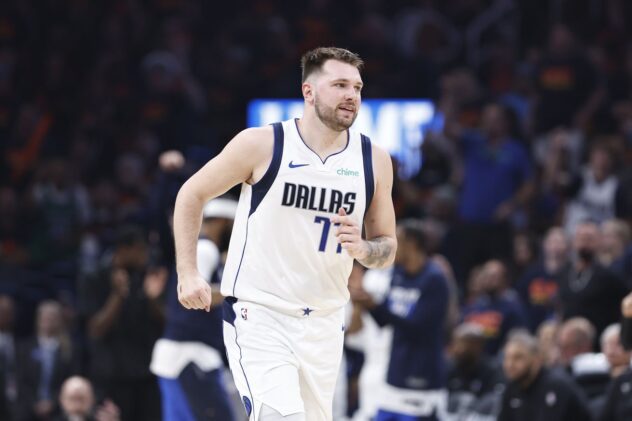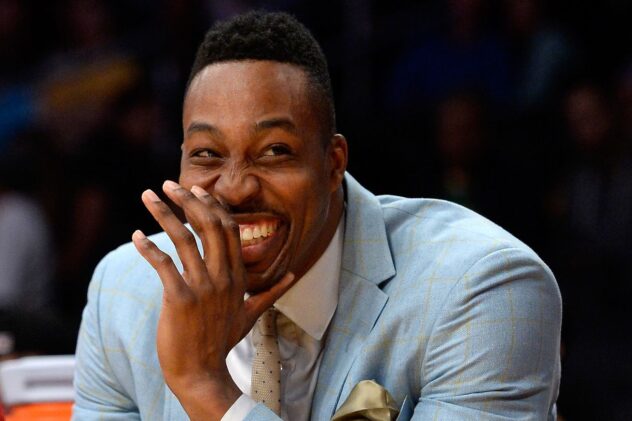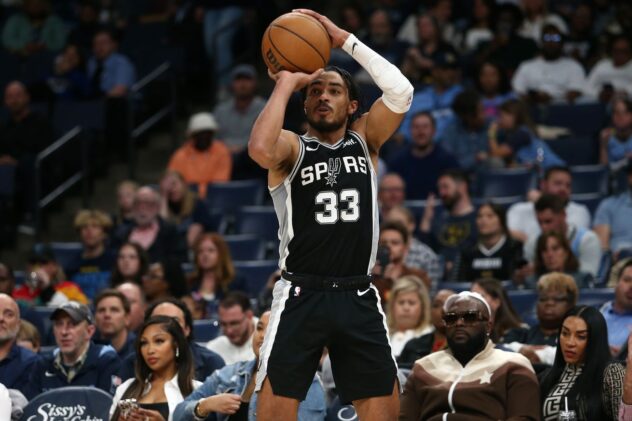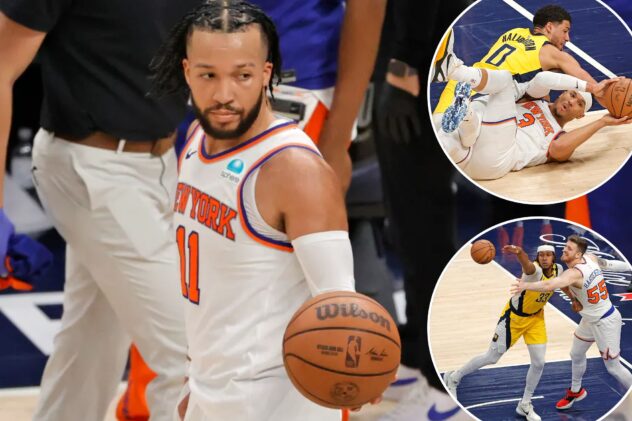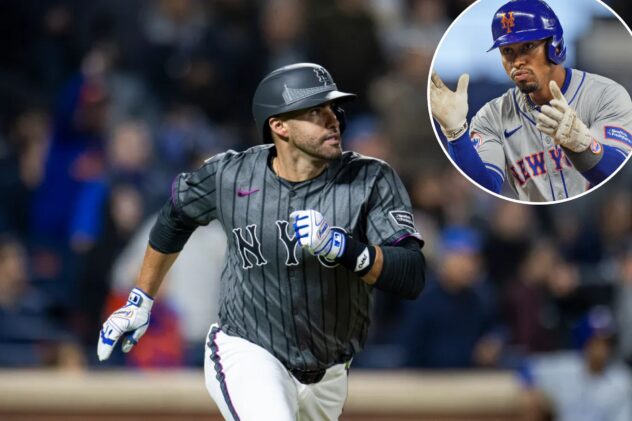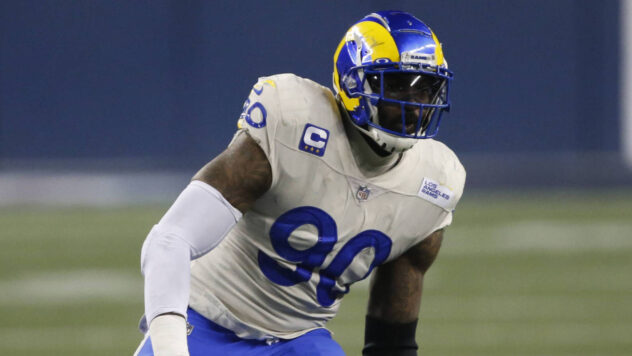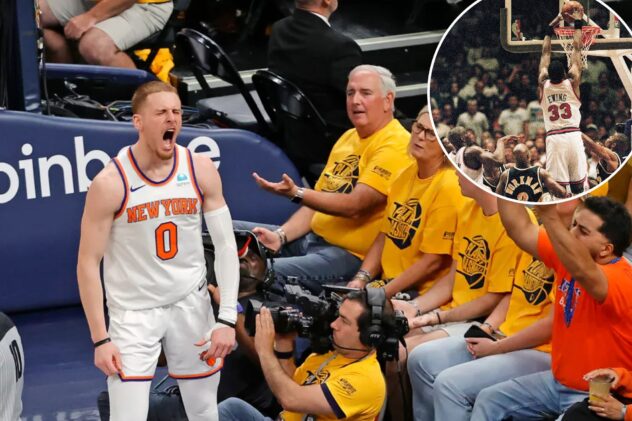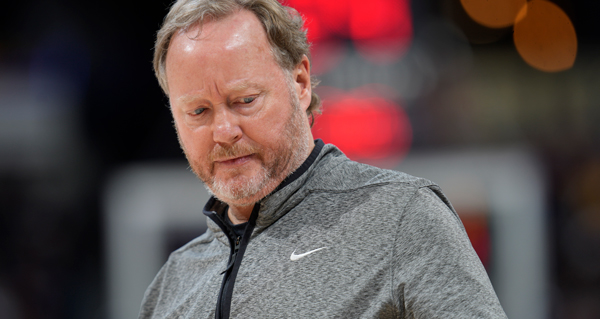Spurs prospect profile: Reed Sheppard
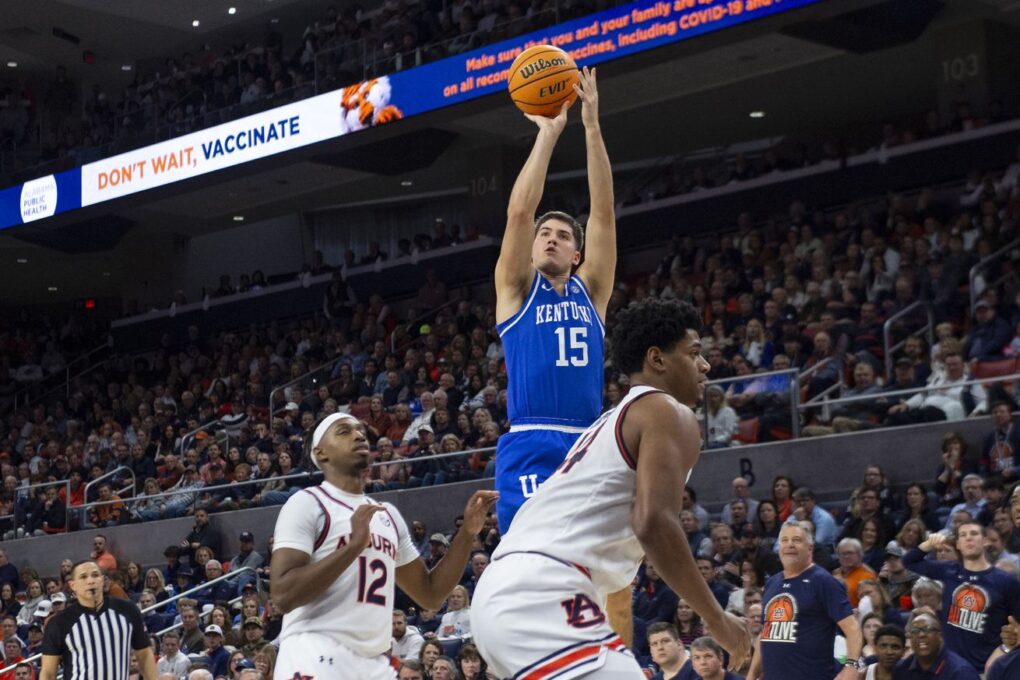
The Kentucky sharpshooter has the makings of a super role player.
The 2024 NBA Draft class is one of the most interesting in recent memory. Not for it’s top-end talent, but rather its lack of it. It’s hard to find a sure-fire all-star in this class, unlike past years when multiple players profiled as franchise cornerstones. That does not mean that the draft won’t produce good players.
The 2024 class becomes much more interesting when you begin to look at these players as the 3rd, 4th or 5th man on a team. Someone who isn’t necessarily the star, but plugs in perfectly to a team and is a key contributor to winning. In the playoffs we’ve seen Mike Conley Jr., Derrick White and Josh Hart all stand out as “super role player” who elevate a team next to their superstar.
Teams looking for that kind of player in the draft will have an eye on Reed Sheppard, the freshman guard out of the University of Kentucky.
Reed Sheppard, 6-foot-3 guard, Kentucky
2023-2024 stats: 12.5 points, 4.5 assists, 2.5 steals, 53.6% FG, 52.1% 3PT, 83.1% FT, 67.9% EFG
Player comparison: Mike Conley Jr.
Strengths
Sheppard had a great freshman season at Kentucky. Despite coming off the bench, he was one of the Wildcats’ most impactful players. In a loaded Kentucky recruiting class that featured DJ Wagner, Justin Edwards and Rob Dillingham, it was Sheppard who rose to college superstardom. The four-star recruit is the son of two former Kentucky basketball players and was Kentucky’s Mr. Basketball in 2023.
Looking at the stat sheet, the first thing that will jump out is Sheppard’s shooting percentages. He hit over 50% of all his shots in his freshman season, including 52.1% of his threes. It didn’t matter where or how he was taking them, the ball was going in more often than not. Sheppard shot 51% on threes off the dribble and 51.4% on catch and shoot jumpers. He showed the capability of getting his shot off from deep range, in transition as well as in the pick and roll.
Reed’s jump shot is textbook. He’s balanced and has great form. He’s not as creative off movement as his teammate, Dillingham, but he’s efficient with his mechanics even under contest. Sheppard’s release will likely need to speed up a bit as he faces defenses at the next level, especially given his lack of size.
A major part of Sheppard’s allure as a prospect is his defensive flashes. At 6-foot-3, he’s not a perfect defender, but he comes up with a lot of steals and blocks. Sheppard has strong and quick hands on and off the ball. 2.5 steals a game with a 4.6% steal percentage are nothing to sniff at. If Sheppard is able to get a hand on the ball, chances are it will result in a steal and a bucket on the other end. He gives good second efforts when he’s beat to block shots from behind or poke the ball away. He’s blocked a number of three pointers this year as well. He averaged 0.7 blocks per game at Kentucky.
Reed Sheppard’s ability to force turnovers is elite: 3.2 Stocks per game and is the only high major (and only freshman) to have both 2.5+ block rate and 4.5+ steal rate
It’s easy to see how this is all in the flow of the defense and he perfectly calculates his gambles pic.twitter.com/YH3Ji5FRkx
— Rich (@MavsDraft) March 24, 2024
Sheppard is also a high-IQ player on the offensive end. It’s not too often you see him force a play or make the wrong decision. He’s a willing passer and a selfless offensive player. Out of the pick and roll he’s capable of making skip passes over the top of defenses to find shooters, or lobs to bigs on the roll. Sheppard is one of the best PnR scorers in the draft, statistically. He scored 1.06 points per possessions in that action.
Sheppard’s not a flashy passer, but he’s solid enough and eliminates most of his mistakes. His hit ahead passes in transition are amongst the best in college basketball. Sheppard had a 24.1 assist percentage, which would have been third best on the Spurs behind Tre Jones (30.8) and Blake Wesley (25.3.)
Weaknesses
Much like his Kentucky teammate, Dillingham, Sheppard will come into the league as an undersized guard. At 6-foot-3, Sheppard will likely be asked to play point guard minutes, even if his best position is likely an off-guard connector. His size wasn’t a major issue at Kentucky, but against next level athletes, Sheppard will likely have a tougher time defensively due to his lack of length. His size will also necessitate creativity in generating his own shot.
That’s particularly an issue due to his lack of ball-handling and playmaking upside. Sheppard had a hard time handling the ball under extreme ball pressure in the SEC. When a team blitzed a ball screen, Sheppard would stop dead in his tracks and often times make a sloppy pass. Sheppard averaged 4.5 assists and 2 turnovers in his freshman season. He has an underrated first step that allows him to attack closeouts, but it’s not too often that you see him create enough separation to create his own shot or paint touch. There were moments, like Kentucky’s win over Mississippi State, where Sheppard looked like a star in the making who could get his own shot off against tough defense, but it wasn’t something he was consistently asked to do for the Wildcats.
His NCAA Tournament performance will leave a bad taste in fans’ mouths. In a first round loss, Sheppard had only 3 points on 1-5 shooting in 26 minutes. It was unlike Sheppard to disappear in a big moment. Yet Oakland took him out of the game by going to a zone in which he never really attacked. It’s just one game, but it supports some of the criticism people have for Sheppard’s upside as a go-to option offensively.
Sheppard still has some work to do on the defensive end as well. Sure the steals and blocks are great, but his off-ball defense is not very good. He’s constantly watching his own man, which often times makes him late to his defensive rotation. He’s an average screen navigator, sometimes getting caught off guard by a pick. Sheppard is prone to allowing defenders to blow by him when he doesn’t get into a low defensive stance. These are common mistakes for younger players. Sheppard will need to clean them up nonetheless, as his size already puts him at a disadvantage.
Spurs fit
San Antonio needs shooting immediately. Sheppard is the best shooter in the class. He’s also just a smart basketball player who has been super productive everywhere he’s played. The Spurs need to start adding good basketball players to complement their superstar – Sheppard fits the bill. Could Sheppard become San Antonio’s second coming of Derrick White? An off-ball guard who can knock down threes, handle the ball in spurts and play sound defense would be a welcomed addition to the roster.
Sheppard would fit in well with the Spurs up-tempo style of play. I can envision Reed grabbing a rebound and pushing the ball ahead to a streaking Wembanyama, or running the floor and hitting a transition three-pointer. In the half-court he’d fit in with the Spurs heavy ball-movement offense. He’s a player who doesn’t need the ball in his hands 24/7 to be effective. He’s very “Spurs-ian” in the way he plays.
We’ve seen Kentucky players outperform their college capabilities when they get to the next level. Jamal Murray, Devin Booker and Tyler Herro all went from simply off-ball shooters to go-to guys in the NBA. It’s harder to see that upside in Sheppard’s game, but I’ve learned to never doubt Kentucky guards.
Sheppard doesn’t have the highest upside in the draft, but he has one of the highest floors. If the Spurs end up with the Toronto Raptors pick in the 7-9 range, Sheppard would be an ideal selection. San Antonio could swing for the fences with their own pick in the top-6 and select a solid basketball player who could develop into a super role player with their second selection.
Previous Prospects:

